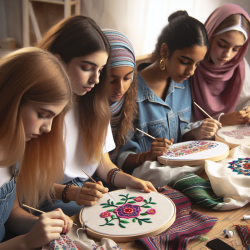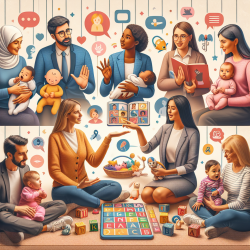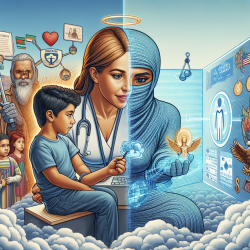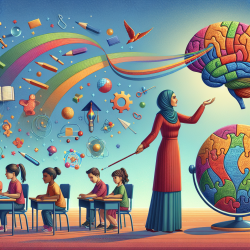Embroidery, a time-honored art form, has found a significant place in modern therapeutic practices, particularly in the context of art therapy for adolescent girls. The study titled "The Therapeutic Aspects of Embroidery in Art Therapy from the Perspective of Adolescent Girls in a Post-Hospitalization Boarding School" sheds light on the multifaceted benefits of embroidery for this vulnerable population. This blog aims to distill the findings of this research and provide actionable insights for practitioners looking to incorporate embroidery into their therapeutic repertoire.
The Study: A Brief Overview
This phenomenological qualitative study explored the experiences of adolescent girls with emotional disorders from post-hospitalization boarding schools who participated in embroidery sessions within an art therapy open studio group. The research identified five main themes related to the therapeutic benefits of embroidery:
- Control versus Release/Freedom
- Calmness from Repetitive Action and Focus
- Being Exceptional versus Conventional
- “Stitch through Time” Experience
- Overt-Latent Layers of Consciousness
Control versus Release/Freedom
The dialectic between control and freedom emerged as a significant theme. Participants transitioned from structured, pattern-based embroidery during hospitalization to more freestyle techniques post-hospitalization. This shift reflects their journey from a state of mental chaos to one of balance and self-expression. Practitioners can leverage this by initially offering structured embroidery projects and gradually introducing more open-ended tasks as clients progress.
Calmness from Repetitive Action and Focus
Embroidery's repetitive nature and the focus it requires were found to induce a state of calm among participants. The tactile quality of the fabric and the rhythmic sound of the needle piercing it contributed to this calming effect. For practitioners, incorporating embroidery can provide a soothing activity that helps clients manage anxiety and stress.
Being Exceptional versus Conventional
Engaging in embroidery allowed the girls to feel unique and exceptional, contrasting with their often turbulent lives. This sense of uniqueness was empowering and helped them develop a positive self-identity. Therapists can emphasize the uniqueness of each embroidery project to reinforce clients' self-worth and individuality.
“Stitch through Time” Experience
Embroidery enabled participants to engage in a dialogue with their past, present, and future. This temporal aspect helped them process their experiences and envision a hopeful future. Practitioners can use embroidery to facilitate discussions about clients' life narratives, helping them integrate past experiences with future aspirations.
Overt-Latent Layers of Consciousness
The process of embroidery allowed participants to explore hidden versus visible aspects of their psyche. The front of the embroidery represented societal expectations, while the back, with its knots and tangles, symbolized their inner struggles. This metaphor can be a powerful tool for therapists to help clients articulate and address their internal conflicts.
Practical Implications for Therapists
Based on these findings, therapists can incorporate embroidery into their practice by:
- Balancing structured and unstructured techniques to match clients' mental states.
- Using the repetitive nature of embroidery to induce calm and focus.
- Emphasizing the uniqueness of each project to reinforce self-worth.
- Facilitating discussions about clients' life narratives through the temporal aspects of embroidery.
- Exploring clients' internal conflicts using the overt-latent metaphor of embroidery.
To read the original research paper, please follow this link: The Therapeutic Aspects of Embroidery in Art Therapy from the Perspective of Adolescent Girls in a Post-Hospitalization Boarding School.










